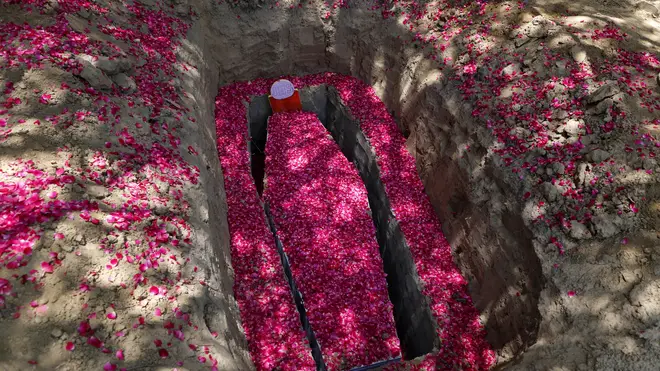
Paul Brand 7am - 10am
17 May 2021, 07:34

The country has been fighting a surge in infections.
A dip in the number of coronavirus cases in Mumbai is offering a glimmer of hope for India, as the country battles a surge in infections.
In the last week, the number of new cases plunged by nearly 70% in the nation’s financial capital, home to 22 million people.
After a peak of 11,000 daily cases, the city is recording fewer than 2,000 a day. Even the capital of New Delhi is seeing signs of improvement.

But experts say the crisis is far from over in the country of nearly 1.4 billion people, with hospitals still overwhelmed and officials struggling with short supplies of oxygen and beds.
A well-enforced lockdown and vigilant authorities are being credited for Mumbai’s burgeoning success.
Even the capital of New Delhi is seeing whispers of improvement as infections slacken after weeks of tragedy and desperation playing out in overcrowded hospitals and crematoriums and on the streets.
With more than 24 million confirmed cases and 270,000 deaths, India’s caseload is the second highest after the US.
But experts believe that the country’s steeply rising curve may finally be flattening – even if the plateau is a high one, with an average of 340,000 confirmed daily cases last week.

On Monday, infections continued to decline as cases dipped below 300,000 for the first time in weeks.
It is still too early to say things are improving, with Mumbai and New Delhi representing only a sliver of the overall situation.
Drops in the national caseload, however marginal, largely reflect falling infections in a handful of states with big populations and/or high rates of testing. So the nationwide trends represent an incomplete and misleading picture of how things are faring across India as a whole, experts say.
Murad Banaji, a mathematician modelling India’s cases, said: “There will always be smaller states or cities where things are getting worse, but this won’t be as clear in the national caseload numbers.”
Given India’s size and population of nearly 1.4 billion, scientist say it is more important to track a cascade of peaks at different times instead of a single national one.
“It seems like we are getting desensitized by the numbers, having gotten used to such high ones,” said Bhramar Mukherjee, a University of Michigan biostatistician tracking the virus in India. “But a relative change or drop in overall cases does not diminish the magnitude of the crisis by any means.”
With active cases over 3.6 million, hospitals are still swamped by patients.

Experts also warn that another reason for an apparent peak or plateau in cases could be that the virus has outrun India’s testing capabilities. As the virus jumps from cities to towns to villages, testing has struggled to keep pace, stirring fears that a rural surge is unfurling even as data lags far behind.
Combating the spread in the countryside, where health infrastructure is scarce and where most Indians live, will be the biggest challenge.
“The transmission will be slower and lower, but it can still exact a big toll,” said K Srinath Reddy, president of the Public Health Foundation of India.
Even in big cities, testing has become increasingly harder to access. Labs are inundated and results are taking days, leading many to start treating symptoms before confirming a coronavirus infection.
In the last month, cases have more than tripled and reported deaths have gone up six times – but testing has only increased by 1.6 times. Meanwhile, vaccinations have plummeted by 40%.
One of the biggest concerns for experts is that India may never know the full death toll from the virus, with fatalities undercounted on such a scale that reporters are finding more answers at crematoriums than official state tallies.